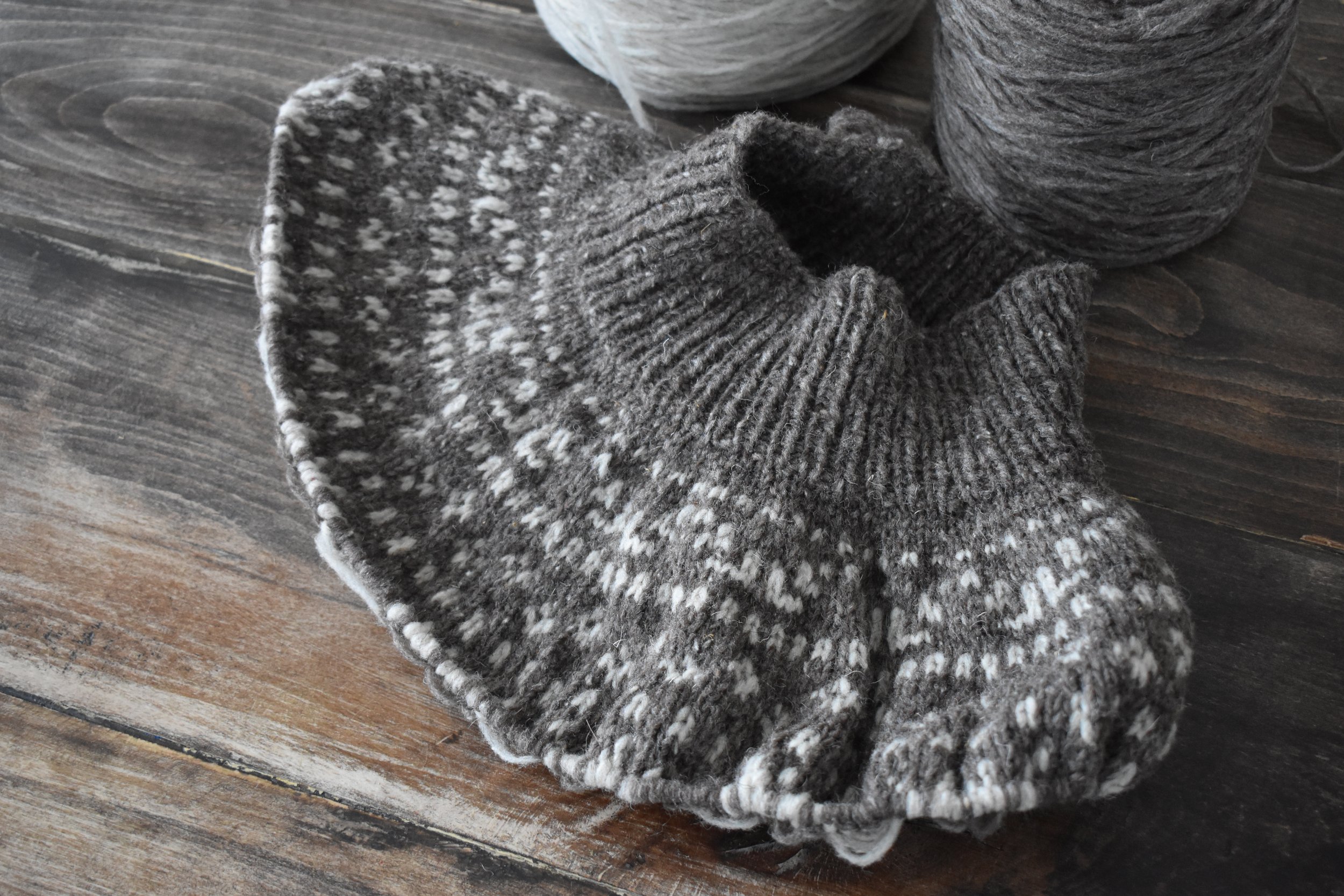Tips for Knitting with Unspun Yarn
It’s currently the darling of the knitting world. Unspun yarn, with its lofty allure, is enticing knitters everywhere to give it a try. The fabric is creates is light and airy while remaining wonderfully warm thanks to all the extra air it holds in it’s fibers. The giant plates are featherweight and knitting with it seems a bit like drawing a cloud into knitted form.
But knitting with unspun yarn can seem a bit scary. Afterall it is UN-spun. The fragility of it can be off putting. Who wants to knit with something that can break at the slightest provocation?
It does require a more mindful approach and a bit of care when choosing which pattern to pair it with. However, it is not as difficult to work with as you might think.
When you are knitting with unspun yarn, and you’ve had a bit of practice with it, knitting with unspun is just like knitting with any normally spun yarn. You just have to know how to work with it and when to be extra careful with it. I’ve picked up a few tips that make working with unspun yarn much easier, and I will share them in hopes it makes your first experience with unspun fun instead of frustrating.
Pull from the outside
As you work, gently unwind more yarn from the outside of the plate. Don’t pull like you would a normal ball of yarn; gently unwind. Don’t work from the center. It will turn into a giant tangle of yarn barf.
There is no need to pre-wind the yarn into a ball. You can work directly from the plates. The only reasons to pre-wind the yarn would be:
- you have a plate with two strands and you only want to work with one strand
- you have a plate with only one strand and you want to work with two strands together
- you only want to take a little bit of yarn with you somewhere (the plates are huge!)
Be careful how you tension
It make take a bit of adjustment to get your hands used to working with unspun yarn versus spun yarn. If you are finding it hard to hold and work with, experiment with different ways to hold the yarn. I knit continental style and was able to tension the yarn as I normally tension any yarn.
Knit a large practice swatch first
As said in the previous section, it might take some time to get your hands used to working with unspun yarn. Especially since the first experience knitting with unspun can be a bit scary. You might find yourself holding it too gently at first and ending up with a looser gauge at the beginning and a tighter gauge at the end.
Take the time to accustom yourself to the unspun. Knit a big practice swatch or perhaps a knit a small item like a hat before you knit your sweater swatch. You are going to tighten up as you get used to knitting with unspun. Make sure you are doing the tightening up on something small and not on a sweater.
Use gentle techniques
When pulled from a long distance, unspun is extremely fragile. When pulled from a short distance, unspun is incredibly strong. You will want to avoid techniques that pull on the yarn at too much of a distance. Use a simple and gentle cast on (the long tail cast on works just fine), and a simple and gentle bind off (binding off in pattern works well).
Stick to simple stitch patterns. Stockinette and colorwork are perfect for unspun yarn. Textured patterns like cables are going to stress the yarn and will be very finicky and stressful to knit.
What to do when it breaks
Knitters are very concerned about when the unspun breaks – and it will break. It’s not a big deal though so don’t worry. A quick spit splice will have you back on your way again. It’s very easy and works perfectly.
How to spit splice:
Lay the ends of the broken piece over each other overlapping 2 – 3 inches / 5 – 7.5 cm, add a little spit (or plain water), and rub together.
I highly recommend spit splicing when joining a new plate. It works wonderfully and means you don’t have to weave those ends in.
Be gentle when weaving in ends
When weaving in the ends, you will need to take extra care. Pull very short lengths at a time instead of simply pulling the needle through. I would start the needle through the fabric, then move my fingers down and pinch the yarn at the fabric and pull it up about a centimeter, then move my fingers down and repeat. Pulling from a very short length is ok. Pulling a long length will make the yarn come apart.
Join new yarn by spit splicing wherever possible to avoid weaving in the ends!
Another thing about the ends: you don’t have to weave them in as securely as other yarns. Unspun yarn is very grippy and likes to hold onto itself. Weave your ends in over a few stitches and then leave a little length on the back side. The ends will be secure and will only become more secure with a little washing, movement, and wear.
A sewn bind off would be a very bad idea. You could probably do it if you were determined, but it will be a miserable experience.
Hopefully these tips help you feel confident when knitting with unspun yarn for the first time! The fabric created is dreamy and it is fun trying new things. If you would like to try knitting with unspun yarn, my pattern Winter Woods is designed with unspun yarn. It will be a fantastic pattern for you to start with. You can find the pattern here.
Happy knitting!



